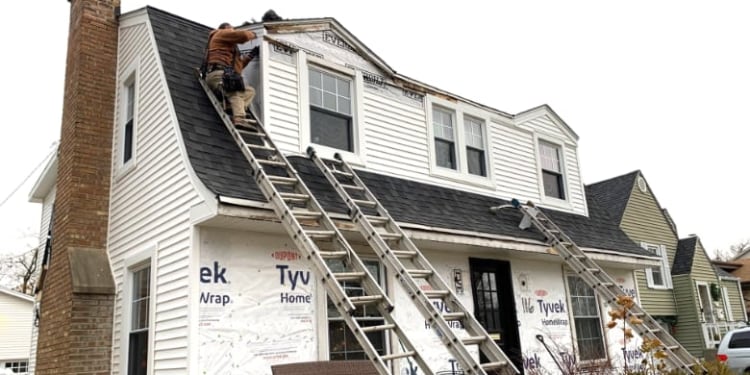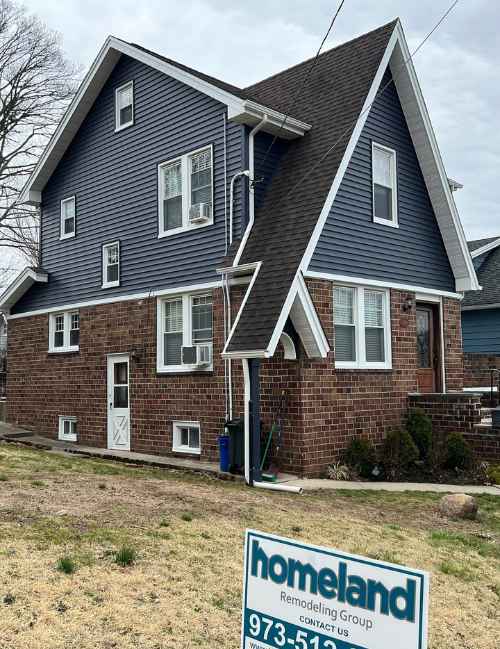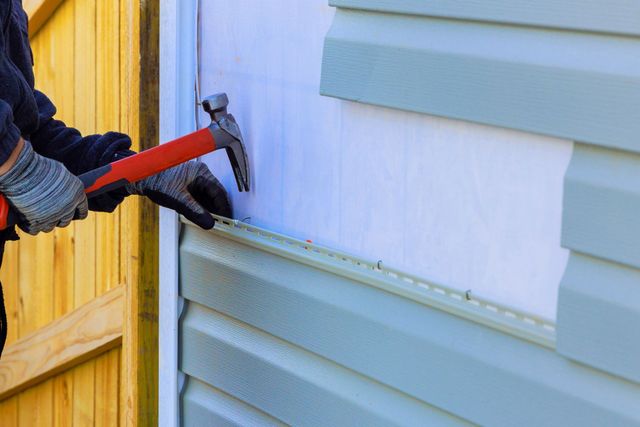Experienced Morris Siding Contractor Delivering Outstanding Curb Appeal
Experienced Morris Siding Contractor Delivering Outstanding Curb Appeal
Blog Article
The Crucial Guide to the Numerous Kinds of Exterior Siding and Their One-of-a-kind Benefits
In the realm of home improvement, selecting the best home siding is an important decision that affects both visual charm and practical performance. With so numerous options to consider, which siding material truly stands out for your specific task?
Timber Home Siding
Wood house siding, a preferred option for property exteriors, offers a classic visual that incorporates all-natural charm with structural honesty. This house siding material is readily available in various styles, including clapboard, tiles, and board-and-batten, permitting house owners to personalize their appearance to match their layout preferences. Timber home siding is normally crafted from long lasting species such as cedar, redwood, or yearn, which are recognized for their durability and ability to hold up against environmental stressors.
Among the main benefits of wood siding is its superb insulation properties, which can add to energy efficiency and lower home heating expenses. In addition, wood house siding is naturally degradable, making it an eco-friendly option when sourced sustainably. Normal maintenance, including paint or discoloration, can lengthen its life expectancy and boost its appearance, enabling homeowners to preserve the all-natural charm of the timber.
Nonetheless, potential downsides consist of sensitivity to insects, rot, and weather condition damage, requiring ample treatment and maintenance - morris siding contractor. In spite of these problems, when appropriately cared for, wood house siding can offer a resilient and gorgeous option that boosts the personality of a home while offering a warm, inviting environment

Plastic Home Siding
Vinyl house siding has become a leading choice for house owners seeking a low-maintenance outside option that incorporates toughness and cost. This versatile material is crafted from polyvinyl chloride (PVC), making it immune to different weather problems, consisting of moisture and UV rays. Therefore, vinyl home siding does not warp, rot, or fade, making sure long-lasting visual allure.
One of the key benefits of plastic siding is its substantial range of colors and designs, allowing house owners to achieve the preferred seek their home without the demand for regular repainting. In addition, plastic exterior siding is simple to mount, which can significantly reduce labor prices during building or improvement tasks.
Vinyl exterior siding likewise contributes to energy effectiveness. Lots of alternatives attribute insulation backing, which enhances thermal performance, assisting to preserve comfy interior temperature levels and possibly decreasing power costs. Its smooth surface area promotes very easy cleansing, calling for just regular washing with a garden hose pipe to remove dirt and debris.
Fiber Concrete Siding
Fiber cement exterior siding has gotten traction among homeowners and home builders alike as a result of its amazing combination of sturdiness and aesthetic flexibility. Made up of a blend of cellulose, sand, and concrete fibers, this house siding alternative is engineered to endure extreme weather, including high winds, heavy rain, and temperature fluctuations, making it a durable option for domestic exteriors.

Among site link the main advantages of fiber cement house siding is its resistance to bugs, such as termites, and its non-combustible nature, offering enhanced fire security. morris siding contractor. Furthermore, it is available in a large array of structures, designs, and colors, permitting property owners to attain their desired visual without sacrificing performance
One more benefit is its reduced maintenance demands; fiber concrete exterior siding typically needs paint or discoloration every 5-10 years, which is much less frequent than other materials. Its long life adds to a reduced overall cost of ownership, as it minimizes the requirement for constant repairs or replacements.
Ultimately, fiber cement home siding represents a superb financial investment for those seeking a durable, attractive, and functional exterior option, combining both form and function to enhance the home's aesthetic charm.
Metal Exterior Siding
The appeal of metal exterior siding hinges additional info on its robust longevity and modern-day visual charm, making it a preferred option for contemporary architecture. Available in materials such as aluminum and steel, steel house siding supplies a series of surfaces and colors, allowing homeowners to attain a personalized appearance that matches their design vision.

Power performance is an additional substantial benefit, as many metal home siding items are made with insulation alternatives that aid manage interior temperature levels. This can bring about reduced energy costs over time. In addition, steel house siding is usually recyclable, making it an eco-friendly choice for sustainability-minded homeowners.
The installation procedure for steel home siding can be fairly simple, resulting in a quicker turn-around time for building projects. Overall, steel home siding integrates performance and design, making it a useful option for those seeking a long-lasting and aesthetically appealing outside coating.
Brick and Stone House Siding
Block and rock house siding attracts attention as an ageless choice that boosts the visual charm of any kind of home. Understood for their sturdiness and low upkeep, these materials provide an extraordinary roi while elevating the residential or commercial property's curb charm. Available in numerous colors, appearances, and patterns, brick and rock can be tailored to match diverse building styles, from typical to modern.
One of the main benefits of brick and rock siding is their energy performance. Both materials possess natural shielding residential properties that help control interior temperatures, potentially minimizing heating and cooling expenses. Furthermore, they supply exceptional fire resistance contrasted to various other siding options, contributing to improved security.
An additional advantage is their long life. Brick and stone can last for decades, typically needing marginal maintenance past periodic cleansing. Unlike timber siding, they are unsusceptible insects and rot, making sure a durable outside that holds up against the components.
Verdict
In recap, the selection of house siding dramatically affects a home's visual allure, energy performance, and maintenance needs. Each type of siding-- whether timber, vinyl, fiber block, metal, or cement and stone-- supplies one-of-a-kind benefits tailored to various homeowner preferences and environmental conditions.
One of the primary benefits of wood exterior siding is its superb insulation residential or commercial properties, which can contribute to energy performance and reduced home heating expenses. Furthermore, timber house siding is eco-friendly, making it an eco friendly alternative when sourced sustainably.One of the primary advantages of steel house siding is its resistance to numerous environmental factors.Energy effectiveness is an additional considerable advantage, as several metal siding items are made with insulation choices that help regulate indoor temperatures. Each kind of house siding-- whether wood, vinyl, fiber block, concrete, or steel and stone-- uses one-of-a-kind advantages tailored to various property owner choices and ecological problems.
Report this page